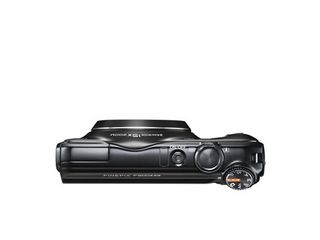Why you can trust TechRadar
For such a high resolution compact, the F550 EXR performs commendably at higher ISO sensitivities. Chroma noise is rarely an issue, with only a little speckling apparent in the shadows at higher settings, although as the sensitivity is increased beyond ISO400, the level of fine detail starts to drop rapidly.
This appears to be due to aggressive noise reduction in camera, which gives images a blotchy pointillist appearance on close inspection. Saying that, even at the highest sensitivity of ISO 3200, images should still be usable for decent 9x6in prints.
ISO settings beyond 3200 are possible by reducing the resolution, and the amount of noise is still commendably low, although smaller print sizes should be considered due to the reduced resolution.

The bundled SilkyPix software doesn't deal with noise as well at high sensitivities, and isn't capable of replicating any of the EXR sensor effects, such as the high dynamic range mode. It is best suited for images taken at full resolution at low sensitivities.
A 'Pro Low Light' mode is provided which takes several images and adds them together to allow higher quality in low light conditions. It is capable of producing surprisingly good results, although care needs to be taken to keep the camera and your subject absolutely still during shooting.
Panoramic images can be produced using the motion panorama mode by simply sweeping the camera from left to right. Best results are obtained using a support, but it still manages to produce a decent enough panoramics hand held.
Another trick mode provided is the 'Pro Focus' mode, which simulates the look of shallow depth of field by taking two shots and combining them. Sometimes it can be difficult to get the result you might expect from this mode, and it seems to work best with portraits using face detection.
Using the standard 'Provia' film simulation setting, colours are faithfully reproduced, if a little subdued. For more punchy images a 'Velvia' mode is provided and for even more subdued colours there is an 'Astia' mode. Black and white and sepia monochrome modes are also included.
Auto white balance works well under a wide range of lighting conditions, producing fairly neutral images in most cases, with a little hint of a colour cast retaining some of the atmosphere of the scene. This is especially true is the appropriate scene mode is selected for the conditions.
Multi segment, spot and centre weighted metering modes are available to choose between, so long as face detection is disabled as this uses the detected face to achieve the correct exposure.
For general scenes the multi segment metering seems overly influenced by light and dark subjects, resulting in exposure compensation being needed to correct wayward exposure readings.
Current page: Fuji F550 EXR Review: Performance
Prev Page Fuji F550 EXR Review: Build quality and handling Next Page Fuji F550 EXR Review: Image quality and resolution
Apple is exploring removable batteries for iOS devices – and I think AirPods need it most

'A whole new generation of displays': researchers develop RGB LED out of miracle material perovskite, paving the way for self sensing, solar powered displays — but its hour-long service life needs to be improved first

Quordle today – hints and answers for Sunday, April 21 (game #818)
